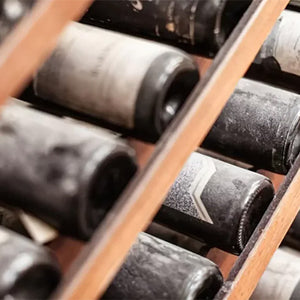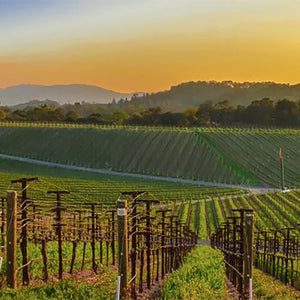
Everything You Need to Know About Napa Valley
Although best known for big, bold reds and unctuous, palate-coating wines, when it comes to viticulture and vinification, there’s actually much more than meets the eye. Curious to learn more? We’re breaking down everything you need to know about this world-class wine region here.
Quick Napa Valley Facts
- 400+ wineries
- California’s first AVA (1981)
- 30 miles long / 5 miles wide
- Less than 4% of California’s total wine production
A Bit of Regional History
Sonoma County native George Yount is credited with cultivating the first grapes int he Napa Valley during the mid-1800s. However, it was ultimately the arrival of Charles Krug that caused the industry to boom. By the early 20th century, the Napa Valley’s wine industry was thriving, and large wineries continued to establish themselves within the region.
However, the arrival of phylloxera, Prohibition, two World Wars, and the Great Depression caused the industry to plummet. It wasn’t until the 1960s that Napa began to see a revival. Much of this reborn success is credited to forward-thinking vignerons such as Robert Mondavi, who brought an entrepreneurial mentality and significant viticultural expansions / advancements to the land.
Where Is the Napa Valley?
The Napa Valley is located in northern California, approximately 50 miles north of San Francisco. It is arguably the most famous and highly regarded wine-producing region in all of the United States. The viticultural zone of Napa Valley is centered around the eponymous town of Napa. Together with Lake, Marin, Mendocino, Sonoma, and Solano counties, Napa makes up the North Coast AVA. In terms of size, the Napa Valley is approximately 30 miles long and just five miles wide.
What Did the Judgment of Paris Do for Napa Wine?
The Judgement of Paris tasting in 1976 was a pivotal moment for Napa Valley wine. This was the year that Napa wines beat their French counterparts in a blind tasting competition for the very first time. From this moment on, Napa was globally regarded as a high-quality wine region. By 1980, over 100 wineries were producing wine in Napa County; the following year, AVA status was officially granted. (Note: The wines that stole the show were Stag’s Leap Cabernet Sauvignon and Château Montelena Chardonnay.)
What Are the Subregions of the Napa Valley?
The Napa Valley is home to 16 sub-regions. They are the following AVAs: Atlas Peak, Calistoga, Chiles Valley, Coombsville, Diamond Mountain District, Howell Mountain, Los Carneros, Mt. Veeder, Oak Knoll, Oakville, Rutherford, St. Helena, Spring Mountain District, Stags Leap District, Yountville and Wild Horse Valley. The overarching Napa Valley AVA received its official designation in 1981.
What Is the Terroir of the Napa Valley?
Like many of the world’s great wine regions, the Napa Valley is characterized by sloping hillsides and a mosaic of soil types. The region is bordered by the Vaca Mountains to the east and the Mayacamas to the west. Overall, the Napa Valley is dominated by volcanic soils. In terms of climate, the region generally experiences a dry, Mediterranean climate, though countless microclimates exist within the overarching area. Summers are long and warm, while winters are short and cold. The Valley’s proximity to the Pacific Ocean helps moderate temperature and creates a blanket of fog, which keeps vineyard sites cool.
Which Grape Varieties Are Grown in the Napa Valley?
With regards to Napa Valley wine production, Cabernet Sauvignon reigns king. However, a good amount of Merlot, Zinfandel, and Pinot Noir, are also cultivated. For white wines, Chardonnay and Sauvignon Blanc are the key players.
Who Are Some of the Benchmark Producers of the Napa Valley?




